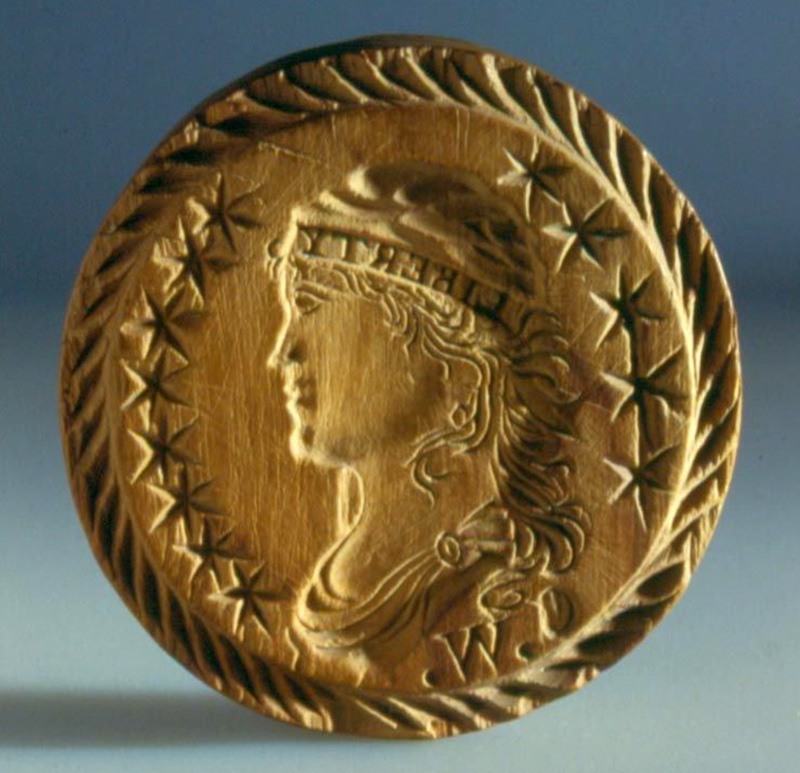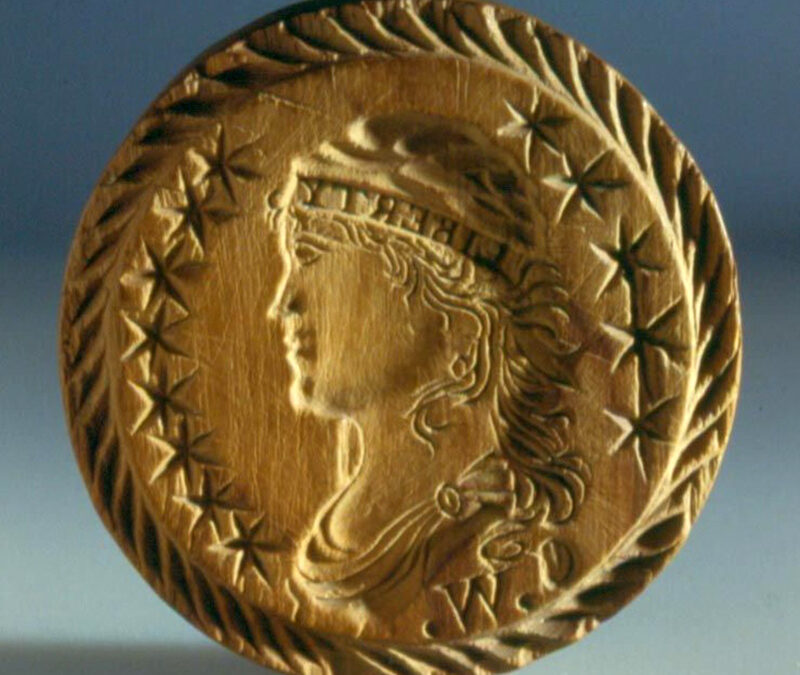Cookie Mold

| Maker | John Vogler |
| Date of Creation | c. 1820 |
| Location | Salem, North Carolina |
| Materials | Maple |
| Institution | Old Salem Museums & Gardens/ MESDA |
| Credit Line | Gift of Anna Rights |
| Accession Number | 936.1 |
| Photo Credit | Old Salem Museums & Gardens |
Although the early material culture of the Moravians in North Carolina was often decorated with Christian motifs (if it was decorated at all), by the first quarter of the 19th century, Moravians had adopted some of the patriotic symbols of America and began using them as ornamentation on decorative and functional objects such as you see here on this carved cookie mold. Salem silversmith, John Vogler (1783–1881) made the mold, but it bears the initials C. W. for Christian Winkler (1766–1839). Winkler assumed the role of community baker in Salem when he arrived from the Moravian community of Lititz, PA, in 1807. The baker used the cookie mold for stamping the bust of Liberty on springerle cookies, a traditional German cookie on which an embossed design is allowed to dry before the cookie is baked. The mold bears a design that is remarkably similar to large cent coins minted in the United States between 1793 and 1857. The pacifist Moravians in Salem, NC, are credited with the first 4th of July celebration when, in 1783, they acknowledged with thanksgiving the end of the Revolutionary War and the coming of peace to the new country. The Moravian celebration was a solemn affair involving prayer, hymns, and a reverent procession around the town square, all of which reflected the deep Christian faith of this sect that first settled in North Carolina in 1753. Their adoption of lady Liberty as the subject of a cookie mold just decades later reflects the Moravians’ acculturation through time as the descendants of the original settlers embraced the secular and nationalistic symbolism of their adopted home.

